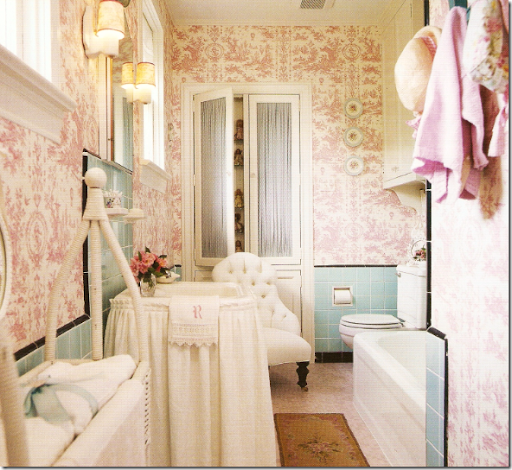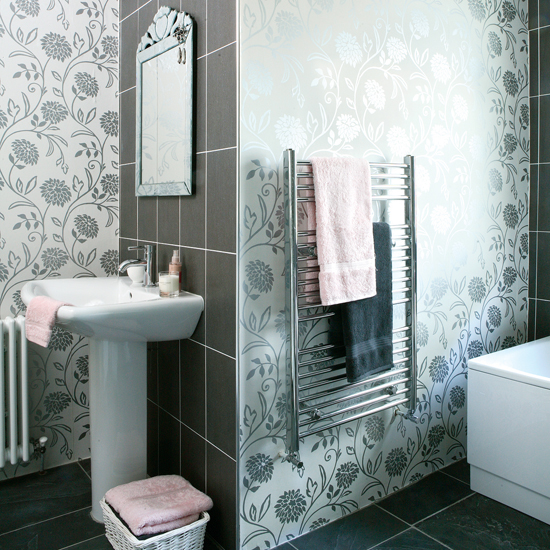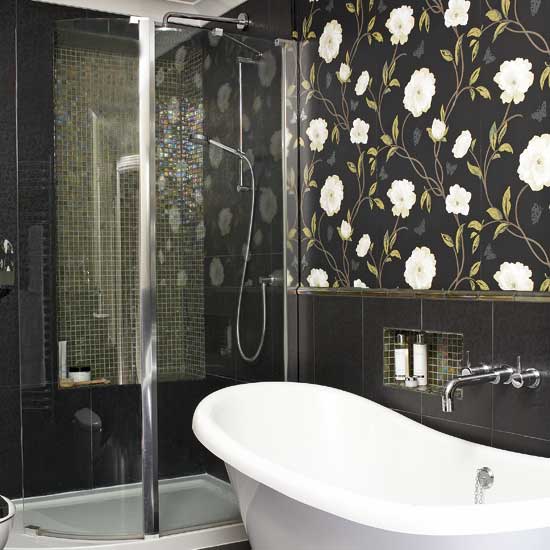Bathroom Wallpaper Biography
Source(google.com.pk)butterfly wallpaper, cheap wallpaper, designer wallpaper, pink butterfly wallpaper, unique wallpaper, animated butterfly wallpaper, animated wallpaper butterfly, anime butterflies pictures, butterflies wallpaper, butterfly hd wallpapers.
A great enhancement to the decor of any bathroom is wallpaper. Generally most people shy away from wallpapering their bathrooms just for the fact that in the past, wallpaper did not hold up well to the humidity in the bathroom and it was a mess to put up. Well times have changed and so has wallpaper. What once was a hassle and a big mess is now easy and fast to install and best of all they make wallpaper for bathrooms specifically
Read more: How to Wallpaper a Bathroom | eHow.com http://www.ehow.com/how_4720375_wallpaper-a-bathroom.html#ixzz1pmiPqRpPOnce your wall is prepped and ready make sure you take measurements of the areas you want to hang your wallpaper and then cut pieces according to those measurements.
Read more: How to Wallpaper a Bathroom | eHow.com
DISCLAIMER: All images found here are believed to be in the "public domain". We do not intend to infringe any legitimate intellectual right, artistic rights or copyright. All of the images displayed are of unknown origin. If you are the rightful owner of any of the pictures/wallpapers posted here, and you do not want it to be displayed or if you require a suitable credit, then please contact us and we will immediately do whatever is needed either for the image to be removed or provide credit where it is due. All the content of this site are free of charge and therefore we do not gain any financial benefit from the display or downloads of any images/wallpaper.
The latest technological innovations in the ceramic tile production sector make it possible to reproduce totally faithfully the aesthetic appearance and the consistency of stone, wood, leather and many other materials: it is now possible therefore to combine the traditional and well-known advantages of ceramics with innovative and unusual aesthetic effects.
Thus, ceramic wall tiles are coming out of the bathroom and kitchen, where they were traditionally relegated, and entering in their own right rooms once reserved for coverings considered more noble, like wood panelling and wallpaper.
On the other hand, it allows wallpaper, made from valuable white body ceramic, to embellish rooms from which it used to have to be excluded, such as bathrooms and other wet environments such as spas and fitness centres.
So here is a selection of the finest Novoceram ceramic wallpaper.
Flora and fauna: Florilège and Aquarium
Inspired by 17th-century hand-painted Chinese tapestries, the Florilège series is a modular composition of twenty-four 22.5×45 cm tiles forming a 135×180 cm motif that can be repeated infinitely and in which flowers, butterflies and multi-coloured birds alternate on a delicate branch. The mix of extremely fine white ceramic, the light weave which gives an amazing fabric effect, and the brightly-coloured decoration combine to make an area packed full of details and with an unsurpassed scenic effect.
From element to element, the Aquarium insert is a rarefied, transfigured representation of the aquatic environment: two koi carp, defined by various frames of precious metals, appear on the surface of an imaginary expanse of water, where the waves become translucent arabesques. The voluptuousness and preciosity of hand-painted wallpaper enter fearlessly into wet rooms, for a unique sensory experience.
With Novoceram Trèsjouy, the famous Toile de Jouy, a classic decorative motif of 18th-century French tapestry, is given new life in an interpretation which combines the wonderful harmony of the elements that make it up with the luxury of the pure gold with which the entire design is made. Trèsjouy recalls the eternal charm of the characters in these courteous and pastoral scenes on twelve 22.5×45 cm tiles which can be repeated infinitely to decorate the most intimate or the most prestigious rooms with new, refined elegance. For these innovative features and the elegant way it recaptures and enhances the French decorative tradition, Trèsjouy was awarded the Observeur du Design 10 label.
The Novoceram Art catalogue was enhanced at the last Cersaie 2011 by the Alliance series, a meeting point of decorative themes and traditions seemingly very different from each other. On the one hand, there is the mosaic technique, traditionally applied to stone or glass, but much used in ceramics also.
On the other hand, there is a creation which imitates the consistency of wood in a design which superimposes on a background of traditional Byzantine lozenges a three-dimensional effect ring design which seems to belong to another dimension. Alliance is a composition of twelve 45×45 cm tiles in which the mosaic tesserae are simply pre-cut, making them considerably easier to lay.
As well as the examples above, we recommend you read our article « Choosing bathroom tiles »
Curiously, wallpaper manufacturers are, on the other hand, playing with reproducing tiles, grout joints included, with an interesting trompe-l’oeil effect. For example, here are the creations of the designer Louise Body with her collections of Paper Tiles
However, these curious and sometimes charming examples do not give any real practical advantage.
Remarkably, the modern roll sizes of wallpapers produced in several countries are based on 200 -300 year old technology. The reason for the width and length of paper rolls is based both on the sizes of the handmade rag paper sheets produced in the 17th and 18th centuries and the widths of the woven fabrics they originally sought to copy. Historically in Britain the handmade paper sheets available, before continuous machine made paper was invented in the early 19th century, were approximately 22 inches (56cm.) square. Twelve sheets would be glued and joined at the edges to form a roll or a ‘dozen’ before grounding and block printing. After printing, the unprinted edges which showed the corner pin marks used for registration or alignment of the printing blocks would be trimmed down to 21 inches before hanging, or at least one edge would be trimmed off to overlap and cover the untrimmed edge of its neighbour and reasonably pattern matched to the adjacent lengths. Wallpaper widths in France, perhaps due to paper or fabric widths, were generally narrower at 47cm. American wallpapers are sold in ‘double rolls’ of 5 yds each for some obscure reason?
he earliest “homegrown” wallpaper was discovered at Christ’s College, Cambridge, printed on the back of documents dated 1509. Its pattern imitated fashionable Italian damask, and mimicry of experience materials such as embossed leather and plasterwork was key to the development of paper hangings. Each designs were block printed on small sheets of paper with larger patterns arranged across several sheets so that the full design only came together when the paper was tacked or pasted to the wall.
This is the method that was used for printing wallpaper and textiles for hundreds of years. The design was hand carved in relief on blocks of fruitwood, one block for each colour. The blocks were dipped in pigment and applied to the paper in sequence to create the design. The qualities admired in block-printed wallpapers are depth of colour and a distinctive texture caused by the vacuum created when the block is lifted from the paper. Block printing is now hugely expensive but still used for some historic projects for which the original blocks exist, for example, the William Morris designs owned by Sanderson and printed under the Morris & Co brand.
Mechanised surface printing of wallpaper took off during the 1840s, by which time paper was being produced in a continuous roll rather than in single sheets. Surface printing adapted the block-printing technique to rotating cylinders with the pattern in relief on the roller. Powered initially by steam, production was faster and continuous. Many wallpapers are still surface printer at an affordable price, including William Morris designs for Morris & Co.
The postwar housing boom drove the search for methods that would allow wallpaper to be mass produced. In the 1950s, rotary printing adapted the technique of flatbed silk-screen printing, which had been developed in the 1940s. Screen printing es essentially a stencil process but, when worked on a rotary cylinder, it much faster. Gravure printing was also developed in the 1950s. Steel rollers etched with tones as well as patterns gave designers a system that enabled them to create watercolour effects. Flexographic printing in the 1960s was a refinement of surface printing, still using a roller with the design in relief, but able to print finer lines and requiring a thinner layer of ink. As thin ink dries more quickly, wallpaper would be produced faster and most cost effectively.
igital printing is here already and is particularly suited to shorter runs and bespoke projects because it is relatively slow. However, unlike rotary printing methods in which the design or repeat is restricted by the circumference of the cylinder, digital printing offers the freedom to tailor the scale of a design to suit a particular interior, and the number of colours in a design is limitless. Another exciting new development is wallpaper with decorative elements applied to the surface, such as crystal and beads, metallic flakes and mineral compounds that capture the light.
A surprising number of artists, architects, and designers, including Salvador Dali, Le Corbusier, Frank Lloyd Wright, Cecil Beaton and Edward Bawden, have turned their hand to creating wallpaper designs. Sanderson struck lucky with it Palladio collections of the 1960s, commissioning designs from young artists such as Terence Conran, Zandra Rhodes and Pat Albeck at the start of their notable careers. Recently Vivienne Westwood has designed wallpapers.
If the wall on which a wallpaper will be hing has different finishes, for example a painted area next to a section that has been plastered or filled, then it is important to apply a primer/sealer to prepare the surface before papering. Modern emulsion paints are designed to be mildly non-stick-admirable for ease of cleaning finger marks but not so useful as a substitute for wallpaper adhesion. Rubbing the surface with sandpaper followed by an application of primer/sealer will help. The optimum preparation for a quality finish is to cross-line the walls by hanging plain uncoated paper horizontally across the surface. This ensures that the joins will not coincide with those between the lengths of the featured wallpaper. Cross-lining also conceals minor imperfections in the wall’s surface and gives excellent adhesion between the paper and the wall.
There are a number of grades of wallpaper adhesive, such as medium or heavy, and it is best to use the one recommended for your particular wallpaper; details are normally found on the back of the label. Starch has traditionally been the main ingredient of wallpaper adhesive and still is, but modern formulas often include PVA to increase longevity. Most adhesive pastes also include a fungicide.
Vinyl wallcoverings come into their own in bathrooms as long as the room is well ventilated. If, however, the space stays war and damp, this will rot the paper that backs the vinyl layer and degrade the adhesive. The wallpaper will curl and mould will develop.
Most wallpapers have a washable finish so it’s important to begin by scoring the surface with a wire brush, as this will allow water to get through and soften the adhesive. The most efficient method of removing wallpaper is using a steam stripper – these re available from DIY hire shops. Otherwise, soak the surface of the scored paper and scrape it off with a stripping knife. Vinyl wallcoverings are usually easy to strip as the PVC layer can be peeled away and the backing paper, once wet, will scrape off easily.
It can, provided the old wallpaper is flat, not woodchip or another textured finish, and is still firmly attached to the wall. New wallpaper won’t stick to a vinyl wallcovering but, if the vinyl layer can be stripped off dry, then the new paper can he hung over its backing paper.
In a sunny south-facing room, the colours in wallpaper will fade in the long term. Surprisingly, the paler colours are more prone to fading, as they contain less pigment that darker ones in which the concentration of pigment is higher.
Bathroom Wallpaper Floral Wallpaper Tumblr Quotes For Iphonr Pattern Vintage HD Tumblr For Iphone UK Pinterest With Quotes Photo

Bathroom Wallpaper Floral Wallpaper Tumblr Quotes For Iphonr Pattern Vintage HD Tumblr For Iphone UK Pinterest With Quotes Photo

Bathroom Wallpaper Floral Wallpaper Tumblr Quotes For Iphonr Pattern Vintage HD Tumblr For Iphone UK Pinterest With Quotes Photo

Bathroom Wallpaper Floral Wallpaper Tumblr Quotes For Iphonr Pattern Vintage HD Tumblr For Iphone UK Pinterest With Quotes Photo

Bathroom Wallpaper Floral Wallpaper Tumblr Quotes For Iphonr Pattern Vintage HD Tumblr For Iphone UK Pinterest With Quotes Photo

Bathroom Wallpaper Floral Wallpaper Tumblr Quotes For Iphonr Pattern Vintage HD Tumblr For Iphone UK Pinterest With Quotes Photo

Bathroom Wallpaper Floral Wallpaper Tumblr Quotes For Iphonr Pattern Vintage HD Tumblr For Iphone UK Pinterest With Quotes Photo

Bathroom Wallpaper Floral Wallpaper Tumblr Quotes For Iphonr Pattern Vintage HD Tumblr For Iphone UK Pinterest With Quotes Photo

Bathroom Wallpaper Floral Wallpaper Tumblr Quotes For Iphonr Pattern Vintage HD Tumblr For Iphone UK Pinterest With Quotes Photo

Bathroom Wallpaper Floral Wallpaper Tumblr Quotes For Iphonr Pattern Vintage HD Tumblr For Iphone UK Pinterest With Quotes Photo

Bathroom Wallpaper Floral Wallpaper Tumblr Quotes For Iphonr Pattern Vintage HD Tumblr For Iphone UK Pinterest With Quotes Photo
No comments:
Post a Comment